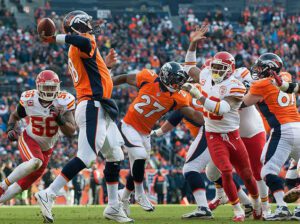Athletes and parents tend to have the same questions about track and field. Here, I’ll attempt to curate some of the most frequently asked questions I’ve received throughout the years.
1) Do the shoes really matter as much as people say?
High quality running shoes and spikes are critical to the health and success of the athlete. Athletes whom pronate could do harm to themselves wearing neutral or minimalist shoes. Those neutral runners may feel discomfort wearing shoes that offer rigidness and support. Buying a beginner runner, or even a novice scholastic athlete, cheap shoes, is not a good idea.
Now, that doesn’t mean that the athlete needs the latest and greatest model- those shoes can get expensive. If price is an issue, there are many 1st and 2nd generation shoes that are very affordable and will support the running style and comfort of the athlete.
2) My athlete is a mid to long distance runner. Do they really need strength and conditioning?
Absolutely! I am so glad that strength and conditioning regiments are becoming increasingly popular for cross country and distance programs. Yes, middle and long distance runners need to run a lot to build up their aerobic capacity.
“Building a base” as its commonly known, is important for these endurance runners. However, the body needs to be strong enough to handle the wear and tear of all those miles.
Incorporating a strength routine isn’t going to bulk up an athlete doing 20-80 miles a week. What the regimen will do though, is make sure the athlete’s back, hips, knees, quads and calves are strong enough to handle the distance so the athlete doesn’t get injured before the peak of the season. If the coach avoids strength and conditioning, add it yourself. It’s that important.
3) Should Throwers and Jumpers run as part of their exercise in practice?
My philosophy is that if you are competing in a track or field event, you must be athletic. And in my opinion, running is essential. With that being said, I’m not asking shot and discus throwers to churn out the same speed as my 400m runners; but running helps build cardiovascular health, and aids in quickening recovery. So yes, throwers and especially jumpers, run, and run often.
4) How bad is it to run through pain?
That’s a hard question. What one person may call pain another would deem it as irritating. It really depends.
This question is fully based on how much trust has been developed between the athlete and the coach. I had athletes who just liked to tell me everything that is going on in their body, without looking for an answer.
I had athletes who would never complain, and then I come to find out that they’re out for three months because they’ve been running on torn ligaments. And finally I’ve had athletes who are hard workers, and would come to me to describe actually what’s going on, we’d have a conversation, and we create an action plan. Never try to run through pain or discomfort on your own. Please discuss how you feel with your coach, and then you both can come to a conclusion whether its best to drop out or try to bear through it. I never put the health of the athlete over a race, so I need to be convinced not to pull the athlete versus running them.
5) When will we see improvement or progress throughout the season?
It depends. Those who are just getting started are going to see faster gains than those athletes who’ve been at it for a longer time. Once the body understands what is required of it, it adjusts until a plateau is reached.
That’s why implementing cross-training, different movements, is important to see incremental progress.
It is also important for the athlete to talk to their coach about their goals, so a plan can be made to make sure they are on the right track.
6) Why are track and field meets so long, sometimes having it broken up in several days?
First, some background. Many people in the United States are unaware that the rest of the world calls track & field “athletics.” The reason being, it is one of the few activities where people can show, without a doubt, how athletic they are in comparison to other athletes. Therefore, in order to show these athletes at the peak of their performance, common practice allowed sufficient amount of time to elapse between events so athletes can participate in events to the very best of their ability.
I realize that if your child does the 100m, 200m, and 4x400m relay and dinner is at 6pm, one can get frustrated. Or, if 100m trials is on Friday, but the final isn’t until Sunday, you have a whole weekend automatically dedicated. I understand. But, the point is that in order for the athlete to compete at their peak, rest and time matters. Even some of the highest profile meets in the world run behind. But, that’s track & field — that’s what you’re getting into.
7) Can athletes get scholarships for track and field in college?
Yes! Of course you can! Granted, those monies will be a little harder to get depending on the size of the school you’re looking at, but running at a collegiate level to pay for school is definitely a possibility. If the athlete is a rising junior or senior, talk with your coach, AD, or guidance counselor to learn about the process. If you need to get started on your own, sign up for the NCAA Eligibility Center, and follow the directions.
8) Why all the rules and regulations with track and field?
Good question. It’s pretty layered. The National Federation of High Schools (NFHS) works with both the US Track and Field Association (USTAF) and the American Athletic Union (AAU) to make sure the standards are consistent. The USATF works with the US Olympic Committee (USOC) and the International Association of Athletics Federations (IAAF) to make sure that the USATF has the same regulations those athletes would face on the international and Olympic level. Chances are then, the rules the middle school track athlete is abiding by will be the same rule Olympian Justin Gatlin abides by. How cool!
9) What can parents and athletes do at home that will help athletes progress?
Due to the limited time athletes, regardless of level, have with their coaches, there are several key elements needed to be done that’s hard for coaches to control:
A) Sleep. The suggested amount of time for the average high school athlete to sleep is 9-11 hours. Sleep cleans the brain of toxins, helps muscle heal, and lets oxygen and water flow through the body.
B) Diet. Runners need complex carbs, clean protein, fatty acids, and plenty of water, vitamin A,C,D, K along with potassium, calcium and iron.
C) Obedience. Please let the coach, coach. Contradicting the coach removes that credibility the athlete needs to have in the program. The more the parent believes in the program, the athlete will follow. Please let the coach work in the manner they know best- even if you were taught differently.
10) What if the coach readily admits that I/my athlete needs more training?
Then it’s time to get a private coach. Follow these guidelines on finding a private coach, and everything is going to work out fine.
I will readily admit that track and field can be as awesome as it is complicated. Different states, schools, clubs and associations can run meets and competitions as they see fit. Please have patience with the coaching staff as they try their hardest to make sure the program competes in the best way possible. Ask questions. Don’t pass judgement on issues you’re unaware of. Let team issues be handled within the team. There are plenty of other questions that can be answered, but in terms for beginning/novice runners and track and field athletes, these are the most common. Happy running!
CoachUp is the safest and easiest way to find a coach for personalized training. With our 100% money-back guarantee and vetted coaches, anyone can achieve their full athletic potential. Find your perfect coach today and become the athlete you want to be!
How useful was this post?
Click on a star to rate it!
Average rating 3.8 / 5. Vote count: 42
No votes so far! Be the first to rate this post.



